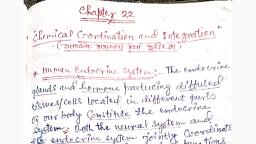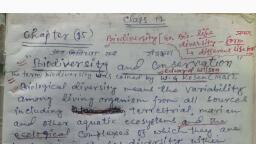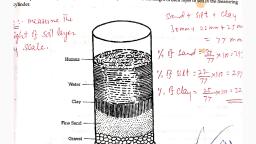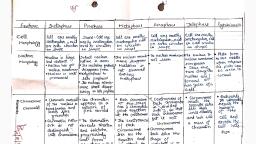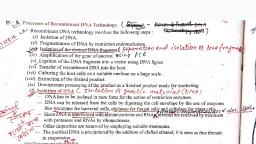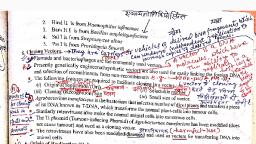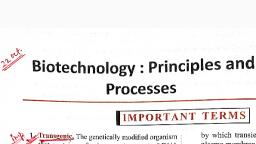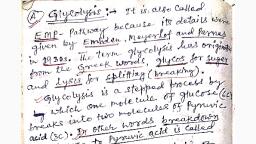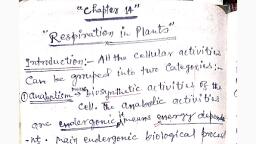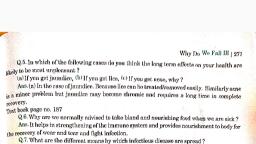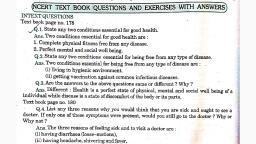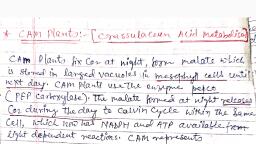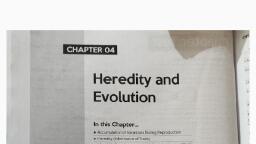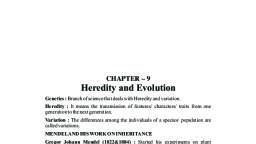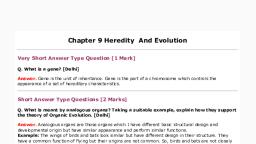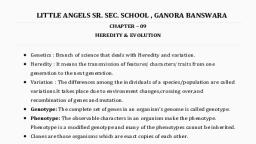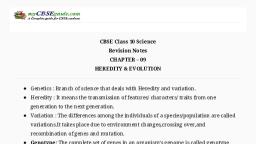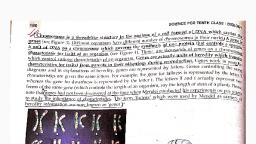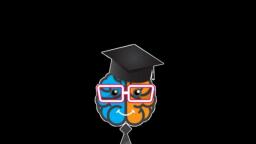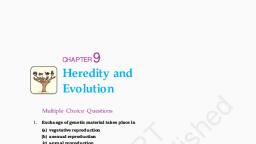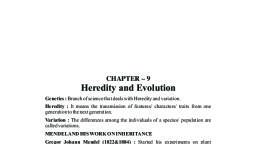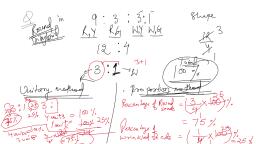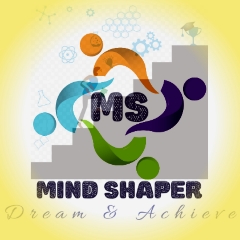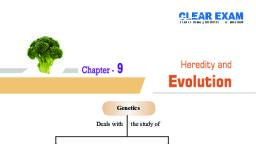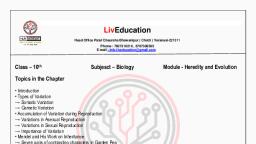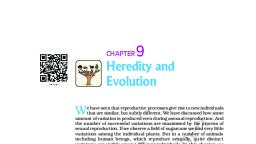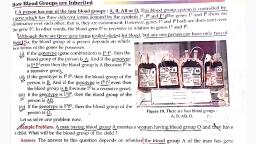Page 1 :
REDITY AND EVOLUTION, , 197, , 3157T, , ACQUIRED, , AND INHERITED TRAITS, , /A trait (or, , or, , tT, , characteristic) of an organismn which is, he, 'not inherited' but develops in responst, ironment is called an acquired trait.For example, if a, envird, beetle does not get sufficient food for a consideia, will, weight, be, reduced, to, due, starvation. The low, eits, this, is, of, beetle, an, acquired, trait of the beetle which, iht', has, in, response, acquirecd, lo, been, the environment which, ntained insufticient lood. Again, suppose the tail ofa mouse, els cut. The 'cut tail' of this mouse is als0 an acquired, trait, ehich has been been brought about by, some agent in its, mvironment. A man may know how to swim or roller, skate, ar speak French or may have a scar on the face from a cut he, got in an accident., All these are acquired traits (or, characteristics) which the man has picked, up (or acquired), himself as he goes through lite., The man is not born with these, Figure 22/Swimming is an acquired trait (or, traits and he cannot pass on these traits to, his children. (The characteristic).It is not, present by birth. In other words., acquired traits of organisms cannot be passed on to their the technique, of swimming is not inherited from, future generationshe reason for thisis discussed below., parents. It is learnt by the person himself (or hersell, We have already studied that the traits (or characteristics), of parents are passed to their ottsprings, through genes in reproductive cells (or gametes) during the procss, of reproduction. So, for the trait or an, organism to be passed on, it must have been caused by a change, tne, in the genes (or DNA) present, reproductive cells of the organism. In other words only those traits, can be transmitted to future generat1ons, genes, DNA), present, have, occurred, changes, the, (or, in, inthe reproductive cells(or gametes) of, nicn, parentorganisms. The changes in the non-reproductive body cells of an organism cannot be inherited by its, ofsprings., This will become clear, from the following examples., When the weight ofa beetle is reduced too much due to starvation, then though there is a change in thhe, normal body cells of the beetle but no change takes place in the, genes (or DNA) present in its reproductive, cells (or gametes). And since there is no change, in the genes (or DNA) of gametes, this acquired trait (of low, weight) of beetle cannot be inherited by its offsprings. So, if some, generations of beetles are low in body, weight because of the availability of less food, then this is not an, example of evolution because this change, cannot be inherited over generations. Whenever these beetles, will get sufficient food, they will become, healthy again and the trait of low body weight will, disappear., Let us discuss the otherjexampleJnow.f we breed some mice,, all the progeny of mice will have tails,, just like their parents. Now, if we cut the tails of, these first generation mice surgically and breed them, we, will get new mice, all with full tails. It has, been observed that even after cutting the tails of mice, for a, , n, , (a) These are first generation, mice, All these mice have full tails, , (b) The tails of all the mice are cut, surgically so that they become tail-less, , (c) All the second generation, mice, produced by breeding cut-tail mice have, mice., full tails. No tail-less mouse is born, Figure 23. The cut-tail of mice is an acquired trait which cannot, be passed on to their progeny in future, generations, through the process of reproduction., umber of generations, a tail-less mouse is never born., , Actually, the cut tail of mice is an acquired tra, progeny. This is because cutting the tails of, mice does not change, their reproductive cells (or gametes), And since the, acquired trait of 'cut tails' does n, , wnich is never passed on to their, , Ches, , of, , tt
Page 2 :
SCIENCE FOR TENTH CLASS:BIOLOGY, , 198, , on lo their next generatin, ot mice, lhis lrail cannot bC passecd, genes, the, life time (calloc, about a change in, expericnces ol an individual during its, the, that, conclude, (because they aro, discussion we, and hence cannot lead lo evolution, progeny,, to, its, on, cannot be passed, , romAhis, , redtraits, dbythe, , change in genes)., by a change in its genes (or DNA, CAtrait (or characteristic) of an organism which is caused, called, ism because they, pSHCcl on lo the progeny of the organisn, can, be, traits, Inheritecd, inherited trait., t have, a, rod beetles, (or DNA) ot lhe organisntsuppose there is population of red, genes, the, changes, produced, i, reproduction so that there in, Again suppose that a colour variation arlses during, bushes., the green, ho, ne, (insteacd ol real). This change ol green colour in the beetle has eenbrowht, colour, in, green, is, beetle which, , an, , (b) Green beetle, (a) Red beetle, a, brought about by change in the genes (or DNA), Figure 24. The colour change of beetle fornm red to green has been, is, inherited trait which can be passed on to its progeny., of its reproductive cells. So, the green colour of bettle an, , cells. The green colour of this beetle is an, about by a change in the genes (or DNA) of the reproductive, change from red beetle to green beetle, inherited trait which can be passed on to the next generations. The, in its survival by mixing with greem, can be considered to be an example of evolution because it helps, , bushes, , Inherited, , traits, , actually, , mean the characteristics which we receive from our parents.This, , wl, , point, eyes, a šnun, , has red curly hair, brown, a, become more clear from the following example. Suppose father, hair, blue eyes,, a cleft chin [see Figure 25(«)]. Again suppose that the mother has straight black, , nose and, , Shnta, , ZO, , (a) Father, , (b) Mother, , irents., (c) Children, inherit from thetr pa, children, the, characteristics, which, some of the, Figure 25. This picture shows characteristics, chromoson, is controlled by the genes on the, of, these, The development
Page 3 :
HEREDITY AND, , EVoLUTION, , M30e, , 199, , thin nose and a pointed chin [see Figure 25 (b)]., The children in the family inherit some characteristics from each of their parents. For exampie, tO, children have red hair like father but one of them has straight red hair while the other one has curly red, hair. The two children have black hair like the mother. Again, two children have brown eyes like father but, the other two have blue eyes like the mother. And finally, two children have snub nose and cleft chin like, father whereas the other two have a long thin nose and a pointed chin., long

